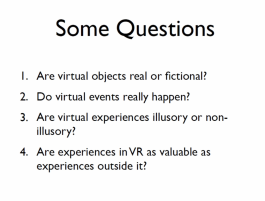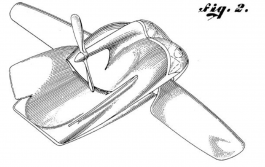THE VIRTUAL AND REAL
5 March 2018

I would say that virtual objects in mixed realities have the same ontological status as those in pure (virtual) realities.
Says David Chalmers. Without the brackets though. By chance the song Same Sun by Real Estate is playing on my mobile phone while i sweep up some thoughts still circling around the reality/illusory topic that me, myself and i started a couple of days ago on this very website: reality disintegration.
I found an article (PDF) and a talk (2016) by David Chalmers – an Australian philosopher and cognitive scientist specializing in the areas of philosophy of mind and philosophy of language and a man with a great portrait shot on Wikipedia on the topic of The Virtual and the Real.
Eine Vielfalt von Wirklichkeiten
But before we „just dive right in“ let me bore you with some german because i bought Peter L. Berger and Thomas Luckmans Die gesellschaftliche Konstruktion der Wirklichkeit and started to read the chapter Die Wirklichkeit der Alltagswelt – „jener Wirklichkeit die dem Verstand des gesellschaftlichen Normalverbrauchers zugänglich ist.“
Das Bewußtsein ist „also in der Lage sich von einer Art Wirklichkeit zur anderen zu bewegen. Ich bin mir der Welt als einer Vielfalt von Wirklichkeiten bewußt {körperlose Gestalt der Träume}. Ich lebe an einem Ort der geographisch festgelegt ist, Sprache markiert das Koordinatensystem meines Lebens, die Wirklichkeit ist um das ‚Jetzt‘ und ‚Hier‘ meines Körpers angeordnet. Ich erlebe die Alltagswelt in verschiedenen Graden von Nähe und Ferne, räumlich wie zeitlich. Ich weiß, daß ich in einer gemeinsamen Welt mit anderen lebe. Solange die Routinewirklichkeit der Alltagswelt nicht zerstört wird, sind ihre Probleme unproblematisch…

Okay, and now back to David: „The most common view is that virtual reality is a sort of fictional or illusory reality, and what goes in in virtual reality is not truly real.“ He defends the opposite view: „Virtual reality is a sort of genuine reality, virtual objects are real objects, and what goes on in virtual reality is truly real.“

He goes on and argues for what he calls „Virtual Realism“ – maybe you or me want to read his 39 pages more carefully as i have done yesterday evening or watch his talk with a bunch of useful slides again.
For now i am quite happy about his line of argumentation and the fruitful term Virtual Realism. Chalmers says that there are way more Virtual Irrealists out there but obvioulsy this field of thought does not seem to be very huge right now (2016) because he mainly cites people working in the context of gaming and virtual worlds.
Perfectly real
I might come back to part 8 of his text, starting on page 30 where he – amongst other things – discusses mixed realities: I would say that virtual objects in mixed realities have the same ontological status as those in pure virtual realities: they are digital objects and are perfectly real.

And by the way: One does not need to be a structuralist or an idealist to hold that virtual reality is real. One simply needs the plausible claim that digital processes on a computer are real, and that virtual reality consists in digitasl processes on a computer. These claims can be accepted by people with all sorts of metaphysical commitments (pg. 34).
Conclusion: Virtual Reality is not a second-class reality.
Gossip: Chalmers received his PhD in philosophy and cognitive science from Indiana University Bloomington under Douglas Hofstadter. He was a postdoctoral fellow in the Philosophy-Neuroscience-Psychology program directed by Andy Clark.
Some further food for thought


